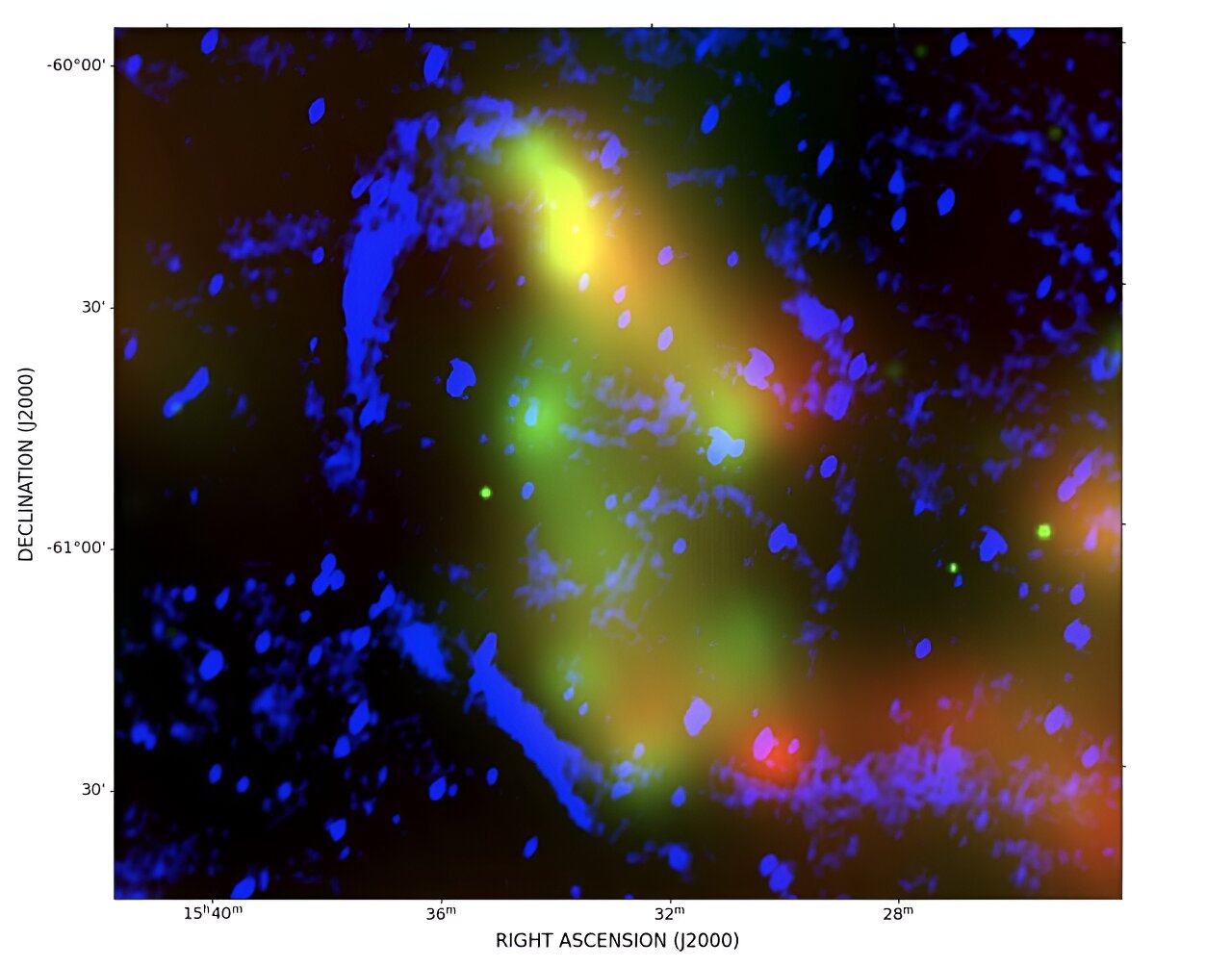A team of astronomers from Curtin University in Australia and other institutions has made an exciting discovery, detecting a new supernova remnant (SNR) located approximately 3,300 light years away. This newfound SNR, known as G321.3-3.9, has an elliptical shape and is believed to be several thousand years old. The findings were recently published in a paper on the pre-print server arXiv, dated Jan. 30.
Research on supernova remnants is crucial for astronomers as they significantly impact the evolution of galaxies. They disperse heavy elements produced in supernova explosions and provide the energy necessary for heating up the interstellar medium. Additionally, SNRs are thought to be responsible for accelerating galactic cosmic rays.
G321.3-3.9 was initially identified as an SNR candidate back in 1997. Subsequent observations have revealed that it is an elliptical and nearly complete shell, measuring 109×64 arcmin2, with a peak flux of 10 mJy/beam and a total integrated flux density greater than 0.37 Jy.
Now, the team, led by Curtin University’s Silvia Mantovanini, has conducted a comprehensive analysis of radio and X-ray data from various surveys, as well as from the Spektr-RG spacecraft, confirming the SNR status of G321.3-3.9.
According to the study, G321.3-3.9 exhibits an extended structure at low X-ray energies, surrounded by a radio shell, and does not display any diffuse emission in infrared. The source’s spectral index was measured to be -0.8, consistent with non-thermal synchrotron emission typical of a shell-type SNR.
2024-02-09 02:00:05
Source from phys.org




















